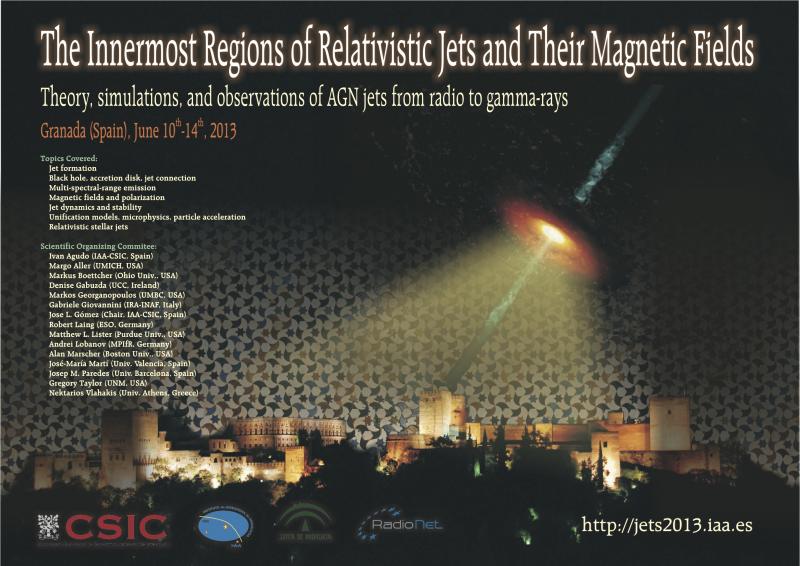The Innermost Regions of Relativistic Jets and Their Magnetic Fields. Granada (Spain). June 10th-14th, 2013.
Sasada, Mahito
4-year optical-infrared photometric and polarimetric behaviors of a gamma-ray blazar 3C 454.3.
Author list: Makoto Uemura, Yasushi Fukazawa, Ryosuke Itoh, Koji Kawabata, Michitoshi Yoshida
Relativistic jets are often associated with active galactic nuclei (AGNs). Blazar is a subclass of AGNs whose jet axis is directed close to the line of sight. Blazars are well known to show large-amplitude flux and polarization variations with various timescales because of its relativistic effects. Thus a continuous photometric and plarimetric monitoring of blazars is a promising way to understand the activity of AGN jets. We have performed a multi-color photo-polarimetric monitoring of 45 optical-bright blazars since 2007. 3C 454.3, which is one of the brightest blazars in the gamma-ray sky, is a target of our project. We have made photo-polarimetric monitoring of this object since July 2007. The object showed violent variation in its flux and polarization. In particular, four large-amplitude outbursts in 2007, 2008, 2009 and 2010 are remarkable. In each outburst, we observed a significant rise in the polarization degree. We calculated structure functions of the total and polarized fluxes from the 4-year monitoring data. The typical variation timescale of the total flux is longer than that of the polarized flux. From this result, we suggest that there are a number of emitting regions which have different intrinsic fluxes and polarization vectors in this blazar jet. These nearly independent emitting regions would separetely contribute the observed total and polarized fluxes.




